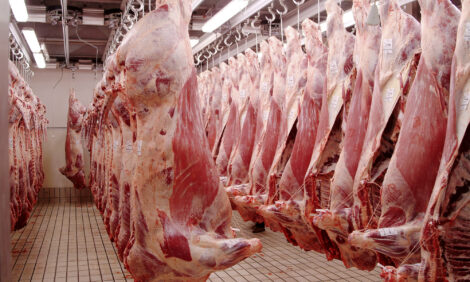



Picking your battles is key to biosecurity success
Biosecurity is one of those on-farm topics that gets a lot of time and attention, but it can easily fall apart in the day-to-day reality of managing pigs.“It’s really easy to sit in an office and come up with a whole bunch of new biosecurity protocols,” Clayton Johnson, DVM, Carthage Veterinary Service, told Pig Health Today.
“It’s another thing entirely to actually go out and try to implement those protocols day in and day out, under adverse weather conditions and all the challenges that happen on our farms.”
Yet biosecurity remains at the very core of animal health, well-being and productivity on today’s hog farms. To be successful, Johnson said, producers need to pick their battles.
“You can’t address everything at once, so identify what is most important, consider the frequency of risk events, view the proposed practices from a real-world perspective and build a biosecurity culture.”
Give people the tools they need and make the steps easy to follow “so there’s no temptation to break the rules,” he added.
Identify the weakest link
Start by finding the weakest link in the chain - where biosecurity is going to break down. “A pathogen doesn’t care how it gets into the farm,” Johnson said. “It will exploit whatever access point you give it.”
Two priorities getting more of Johnson’s attention these days are protocols for bringing supplies into a farm and loading pigs for transport. “It’s easy to write a protocol for either one of them but very hard to effectively implement 100 percent of the time,” he noted.
Small supplies, an employee’s lunch or individual tools are commonly disinfected by UV light. Bigger supplies, medication boxes, semen rods, coveralls and boots are typically addressed in a fogging room or disinfectant chamber, but there’s more to effective disinfection than allotting the appropriate contact time.
He pointed to student research from the 2019 American Association of Swine Veterinarians’ meeting that illustrated insufficient coverage even when applying aerosolised disinfectants via fogging machines. Because fogging machines are stationary, the disinfectant only sufficiently covers one, maybe two sides of the item; commonly the bottom remains untouched.
“To me, that’s low-hanging fruit; we need better contact,” Johnson said. His recommendation is to add more foggers placed at multiple angles to improve coverage of all surfaces, as well as to space out the supplies.
His second note is to be sure the disinfection room is properly sized. For example, suppose you’re bringing in a month’s worth of supplies at one time, but the chamber is only big enough to hold one-eighth of the total at any time. The disinfection process could take someone a half day to repeat the steps over and over.
“We have to make those rooms bigger, so that we can complete it in a more timely, practical manner,” Johnson said.
Rethink load-out practices
Transport vehicles have gotten increased biosecurity attention in recent years for potential pathogen spread, but the pig load-out area and practices are still too often overlooked.
He shared a memorable experience of loading just-weaned pigs early on a cold, windy Midwest winter morning. Not only had the pigs never walked up a ramp before, but encountering the wind and cold aluminium flooring was enough to send them back toward the comfort of the barn.
“That’s a very high-risk situation,” Johnson noted. “That experience alone taught me that we have to rethink this and do a couple of things differently.”
While there’s no perfect way to ensure pigs will stay on the trailer every time, the point is to treat the trailer, chute and load-out area as “dirty.” “Normally, I would go back into the barn from the load-out area,” he added. “The beautiful thing is, I can make a new clean/dirty line.”
The point of last entry - or the last place that you have a door - needs to be the clean line, because a door stops the pigs from going back into the building. Johnson recommended rethinking layout of the load-out space. In this case, a side door allowed him to leave the load-out area without having to exit through the building. He would have to shower before returning to the pigs in the building.
The other message is to have equipment accessible to wash and disinfect the load-out area, including hot water or other measures to accommodate cold weather clean-up. “Dedicate boots, coveralls, rattle paddles - whatever equipment workers need to do the job - to stay in that area, because it’s now dirty; it’s outside the farm,” Johnson said.
Live in the real world
When it comes to evaluating or creating biosecurity protocols you have to consider a range of realities, which includes the worst possible conditions. Load pigs on that blustery winter morning and see what’s being compromised. Try to manage the disinfection of multiple pallets of supplies, not just a single package.
“Spending time with the people who do the work is the biggest lesson I’ve learned,” Johnson said. “Talk to the people who do the job every day.” Biosecurity also needs to be detail oriented - “you can’t skip the process,” he added. “No matter what your biosecurity strategy, if the farm culture is to bend the rules, that’s a problem.”
And culture is always defined by leadership, so lead by example.






